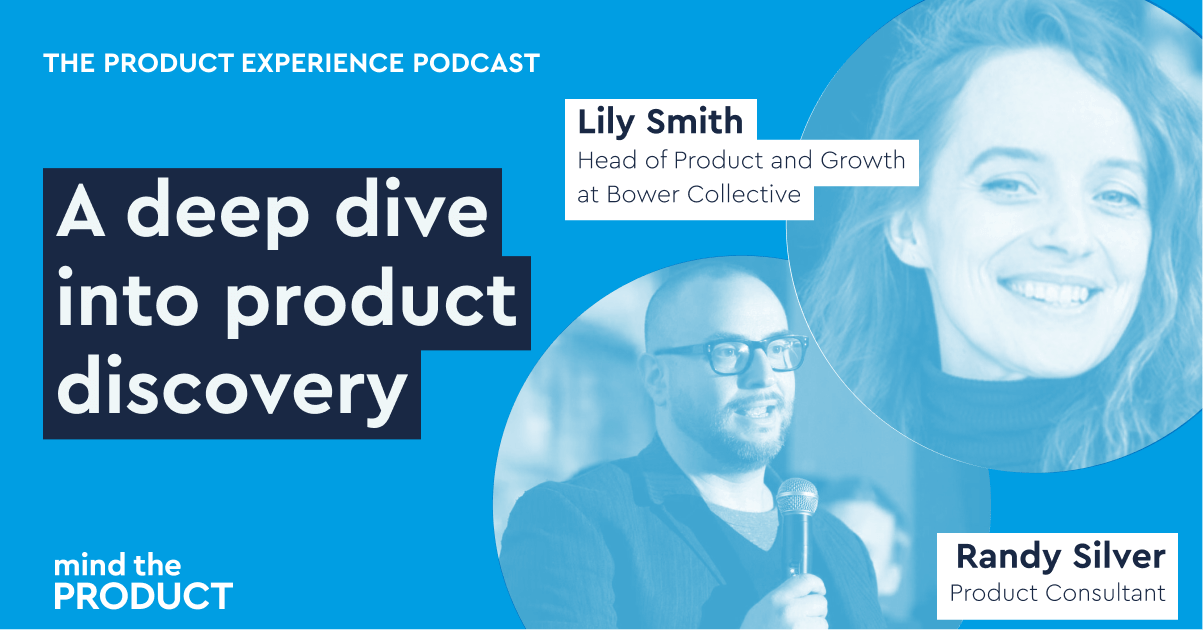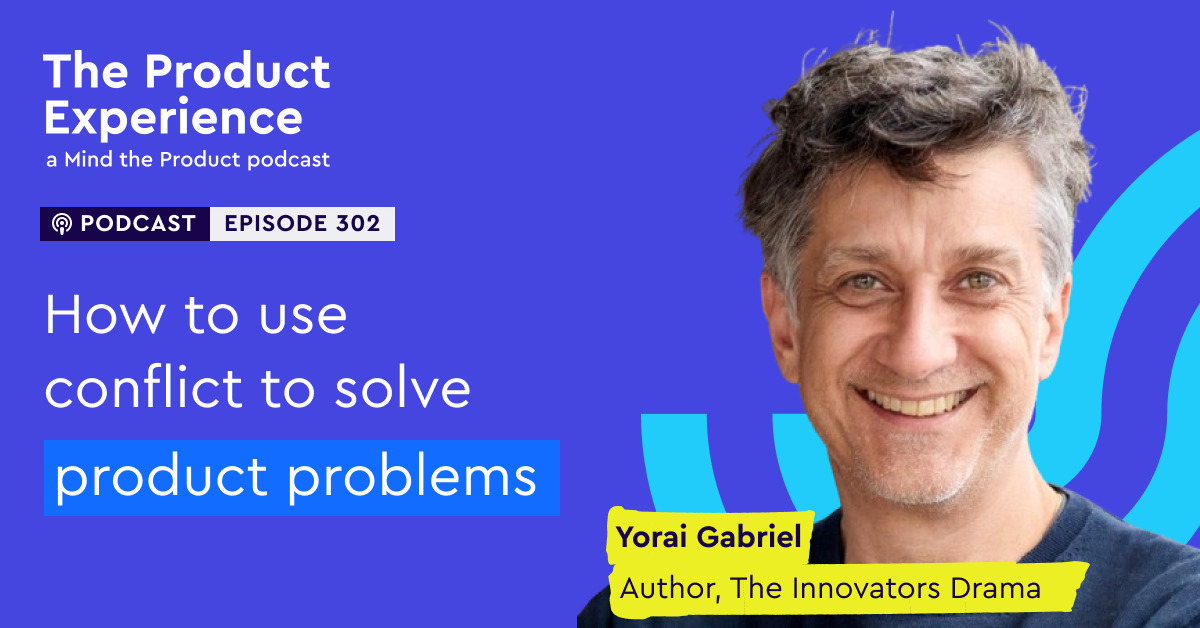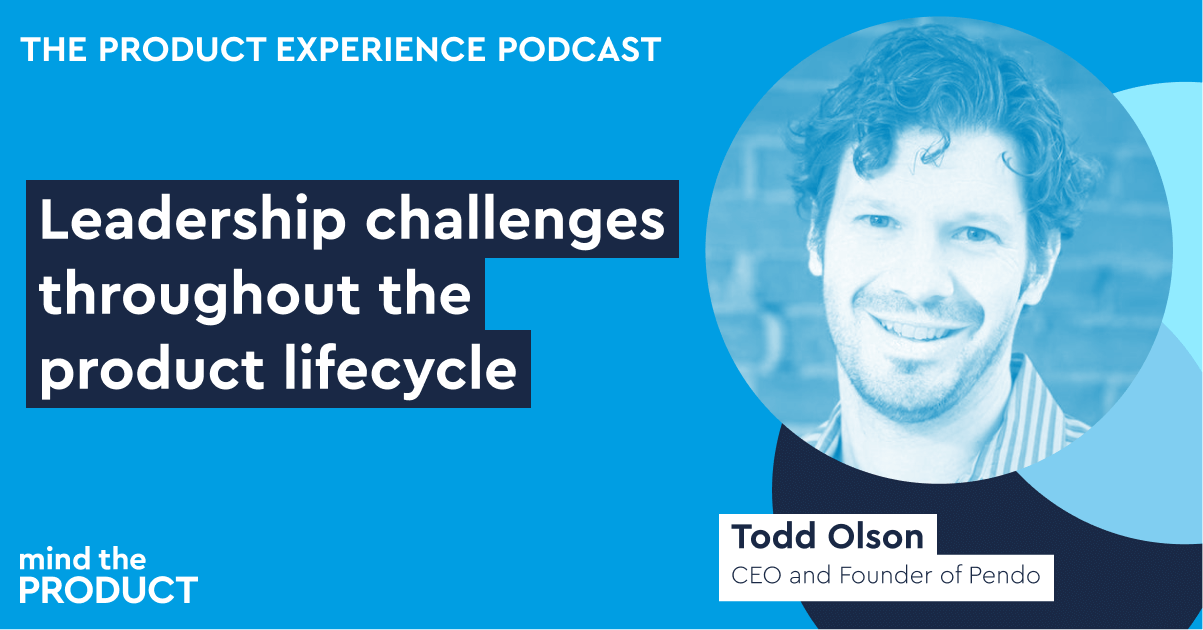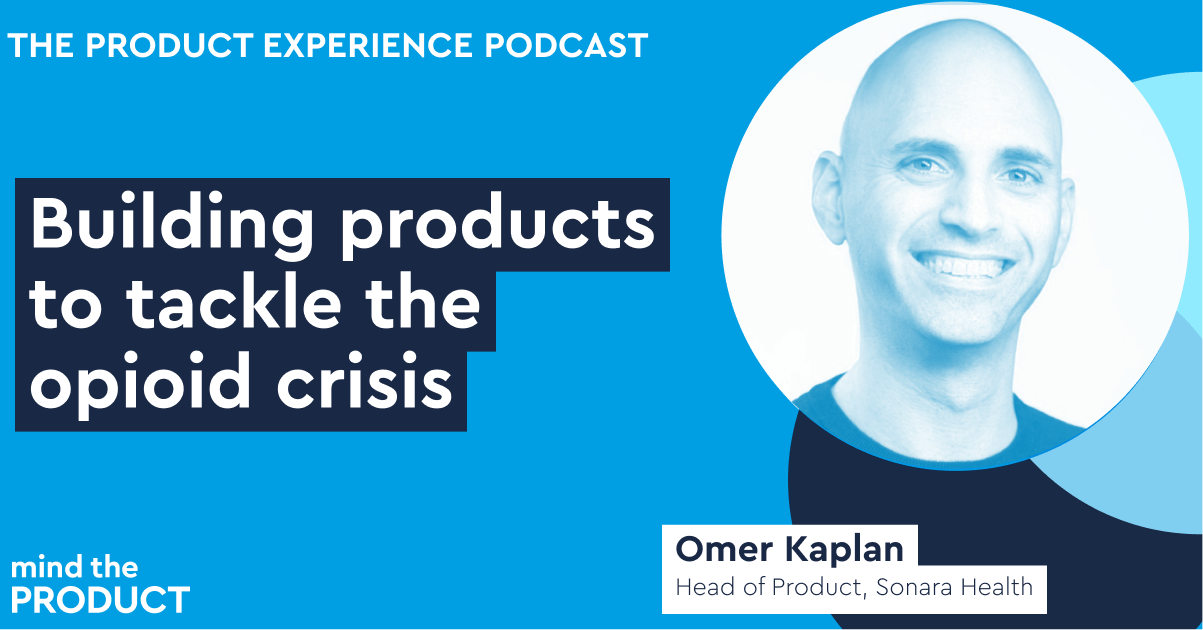Customer centricity is about bringing the human dimension to everything that you do with your product. To create that process, you need to create an environment where product managers can innovate and thrive. Daniel Harris, Experience Strategy Director at cxpartners joins us on the podcast to talk all about how to deliver that great customer experience to all who invest if your product.
Featured links
Featured Links: Follow Daniel on LinkedIn and Twitter | ‘The State of Customer Centricty’ model at CX Partners | ‘Developing a Customer Centric Mindset’ talk by Amon Kiplagat at Mind The Product ProductTank Birmingham
Episode transcript
Lily Smith:
You know, Randy, we spend all day long trying to please our customers, when’s the last time a customer actually did anything for me?
Randy Silver:
You mean, aside from buy your services, give you money engage with your product?
Lily Smith:
Exactly. None of this is about me. They just love my products. Sometimes I just want the customer to think about me 1/10 As much as I think about them, I’m just so customer centric, it hurts.
Randy Silver:
Billy, I’m not sure that’s what being customer centric is actually all about. But luckily today we have someone joining us who can help. Dan Harris from CX partners. They just did a big study on what makes organisations successful. And it turns out that being customer centric is the key differentiator.
Lily Smith:
Well, that’s lucky. Imagine if it turned out the other way. I want to hear more about this. So let’s get right into it. The product experience is brought to you by mind the product.
Randy Silver:
Every week, we talk to the best product people from around the globe about how we can improve our practice, and build products that people love.
Lily Smith:
Because it mind the product.com to catch up on past episodes and to discover an extensive library of great content and videos,
Randy Silver:
browse for free, or become a minor product member to unlock premium articles, unseen videos, AMA’s roundtables, discount store conferences around the world training opportunities.
Lily Smith:
mining product also offers free product tank meetups in more than 200 cities, and less probably one day you. Hey, Dan, it’s so great to have you here on the podcast today. So before we get stuck into our topic, it’d be great if you could give us a real quick intro into who you are and what you do. And also kind of how you got there.
Daniel Harris:
Yeah, sure. Yeah, really pleased to be here today. So I am a trained designer, interaction designer, service designer, increasingly, organisation design. I’ve been in the, in the industry, digital industry, I guess for about 20 years. past 10 years, I’ve been building teams, around organisation design whole system, what I call whole system design, which is a mix of organisation, and systems thinking. And I’m also now the Director of practice with six partners. And we run design and innovation projects with lots of clients around the world, which I absolutely love. And I’ve got a team who work on those projects. And I really enjoy working with teams to work with clients to improve how they deliver products and services to their customers. So yeah, that’s me.
Lily Smith:
Awesome. Great. Thanks for that. And so we’re going to talk about customer centricity. But before we get stuck into the topic in detail, just give us a real quick kind of overview over what that means, from your perspective, because you’ve been, like living and breathing this in the work and the analysis that you’ve been doing. So yeah, give us your kind of take on what that means. Sure.
Daniel Harris:
Well, customer centricity, you know, a lot of people will have heard of it. It’s been around for quite some time. It’s certainly been bouncing around organisations as a, you know, as a real thing for some time. our take on it really is that it’s, it’s actually about human centred design. And customers for us could be customers that you serve through a product, customers could be employees, customers could be partners that you work with. So for us customer centred customer centeredness is about really bringing the human dimension to everything that you do in an organisation. It’s about servant leadership. And I think this is one of the things we found. It’s about delivering great experiences to your partners and customers. But to do that, you’ve got to have an environment in which your people can thrive and really deliver that great experience. So a lot of it actually is about, you know, what you could say is employee experience as well. And so, the model that we use to measure customer centricity is based on five dimensions. And those dimensions cover a really broad set of factors about how an organisation and performs around using its capabilities to deliver great experiences for customers. Both dimensions are about people, process, governance facilities and communication. And, you know, each each one of them represents, you know, you can imagine, you know, everything to do with the environment around, let’s say, a product managers work. And I think this is this is really something that we we discovered, as we did, the research was, you know, it’s, it’s about the product manager experience, if you get the things in place for them, and you have an environment that’s really right for them, then they can do the best work, and they can deliver really great experiences to customers.
Randy Silver:
So, Dan, it sounds interesting, you’re just talking to him relaying all those five things back to the product manager? I’m curious, is it the product managers job to be the one who’s customer centred? Or is it everyone’s job? Where do you start with this?
Daniel Harris:
So great question. A lot of other maturity frameworks out there. Some of them focus on UX or design, Team maturity, or product team maturity model is much broader than that. It’s about the the organisational environment in which everyone from leadership down from, you know, from team members and frontline staff up are cared for and empowered to deliver the best experiences possible for customers. So whether it is this for product managers? Absolutely. Is this for their managers of product directors, is this for the C suite? Absolutely. Is it for call centre agents, you know, support centre, agents? Absolutely. I’ve got some great stories, actually, of how, you know, one of our participant organisations, you know, really, really brings all of those people together in an amazing way to focus around solving customer problems. The end of the day, that’s what organisations are there to do, that they’re there to solve those problems.
Lily Smith:
And so we haven’t really kind of touched on this yet. But like, one of the key reasons why we wanted to chat to you today is because of this report that you did around the level of maturity of different organisations in in customer centricity. So tell us a little bit about the report. Who, who you like doing the research with and what kind of inspired the research?
Daniel Harris:
Yeah, thank you. The the the study came about as part of a partnership that we have with Google, I think we were both, you know, really interested in this question of, okay, we we talk about customer centricity organisations tried to do it, we know that there’s something really important there. But there isn’t really a standardised model. There isn’t way a really a way of measuring it. It’s very hard for teams to know whether they’re doing the right thing, you know, a broad level of customer centricity. And we saw examples of where it does, you know, had worked out, we knew clients that we had worked with that have, you know, just seem to get it right. But there was we needed to cope, we needed to sort of codify that and find out what, what is the pattern? So we put this, this study together, it went out to 100 organisations across Europe. It was a reasonably short survey, I say, short there 70 questions. But those questions were across those five dimensions. And it really aimed to uncover, you know, a data that we could use to understand where there was a correlation between high maturity and customer centricity. And we wanted to really see if there’s correlation with that and business performance.
Lily Smith:
And I guess there’s, there is a high correlation. Those businesses that are more customer centred, did perform better.
Daniel Harris:
Yeah. You’re right. We were relieved to find out.
Lily Smith:
was like, No, don’t be customer centred. You’re
Daniel Harris:
terrible. Forget it. Yeah. Go back to the way you were. At ease. No, we found we found some amazing correlations actually. We found that those The World high maturity. In customer centricity they had 90% of their employees reported that they were highly satisfied with their work. We found that 65% of those highly mature organisations, were able to make changes to their infrastructure and their product development stack in a matter of weeks or months. And I think this is this was the one that that blew my mind, really. And we compared that to 65% of low maturity organisations. It took them years to do the same work. So we’re talking months or weeks versus years, and I and that blew my mind.
Randy Silver:
I don’t believe that for a second. I don’t believe it took them years. I don’t think they ever did it.
Daniel Harris:
They’re still doing it. You know, it’s
Lily Smith:
so Okay, so when we think about customer centricity, and in the kind of context of your study, were you looking at more at the sort of larger older organisations, as opposed to sort of younger, smaller organisations?
Daniel Harris:
Yeah, we, the way that we sampled was very much around looking at what we saw as the biggest problem actually, in customer centricity, which is that if you’re a heritage organisation, been around for a long time, you know, you’ve you’ve got layers of technology, you’ve got layers of culture, layers of the way that things are supposed to be. And we knew that that represented a really interesting challenge for for this report for this study. And for those organisations, it you know, we wanted to understand, well, if we’re, if we’re going to do this, we want to want it to work for everyone. Now, that’s not to say that, you know, the research isn’t useful for smaller organisations or startups, but it did, you know, the, the feedback that we got, the data we got was from organisations that were mostly over 10 years old, and they had large teams, average size was 24,000 employees. So they were, you know, big and they had, you know, a lot a lot of complexity. And I think that’s what we wanted to discover how in a, in a world of complexity that these kinds of organisations have, are they able to become customer centric?
Lily Smith:
So I bet everyone’s dying to know, of the kind of the businesses that you considered to have a high level of maturity in their customer centeredness? Like, what were the things that you found, were kind of typical within that business. And we’re going to talk about some of these now. So the first one that we had on the list was having a design system, which I thought was quite unusual, actually, I was like, Really, that’s like to like kind of top of it? Well, not not necessarily top of the list and not in priority order. But you know, one of the things that really made a customer centred organisation. So tell me about this one, and like why you think it’s an important factor in,
Daniel Harris:
in this study? Sure. The Well, what we actually found was, it wasn’t as prevalent at all as, as we thought design systems being, you know, really kind of useful, actually, for organisations to rapidly iterate and develop products. But what we found was just 15% of our low maturity organisations, low maturity in terms of customer centric capability, only 15% of them had a design system operated one. And that that was in contrast to 85% of highly mature organisations that had a design system. That, you know, if you think about high, high performing organisations are highly, you know, we know this correlation to their high customer centricity and high business performance. It’s really clear that there’s something about having a design system that really accelerates organization’s ability to solve customer problems as they almost as they occur. And one of the most high scoring organisations we spoke to, actually, we spoke to sort of five organisations that were highly performing in our study as well as the survey, and one of them really took took this idea of speed and solving problems in developing iterating to a different level. What we heard they They did, they had a project where they put a developer with a Support Centre agent, and a copywriter. And they’d work together on for a week at a time on listening to custom problems, as they, they were, they were sent in or called in, the developer would work on, you know, something that would help to automate a problem that could be automated, which took time away from the agent spending, you know, time on something that could be automated and meant that they could spend time solving real problems. And so, you know, that was just the way they operated. So this idea of speed, you know, creating real fixes for customer problems as fast as possible, with the aid of, you know, a tool set that allows you to do that I designed system, we found highly valuable to highly mature organisations.
Randy Silver:
Dan, do you think that one is correlation or causation? As in? Do you think that companies that are already oriented this way are ones that are mature enough to have gotten to the point of implementing a design system? That it’s that kind of thing? Or do you think the design system comes first and one of the emergent qualities is that you become more customer oriented?
Daniel Harris:
That’s a great question. What what we do know is that the market is changing all the time, you know, customer’s expectations are of rapidly moving ahead. And those organisations that are able to keep up can, can be ahead, and they can provide the right services for customers as they need them. Now, that might be the factor actually, for the organisations really care about. And they’ve just found that, well, in order to do that, they have to have the right tooling in place, they have to have, for example, a design system, they have to be able to, you know, speed up their ability to restrict their infrastructure, they have to have modular, you know, infrastructure, microservices, etc. In order to do that. So I believe what comes first is we’re seeing these problems, and we have to fix them. That’s what highly mature organisations see. They see customer problems first, they don’t actually see anything else. And it’s an incredible, it’s incredible perspective to have, it’s very hard to get there.
Lily Smith:
I suppose it’s really interesting as well, like your, to your point at the beginning around being like, if you’re humans includes your developers, and they’re being slow, like, their problem is, I need to know what like, what button style this needs to be. And so they need a design system, then, you know, the design system is the solution to the human centred problem within the product team. Oh,
Randy Silver:
I’m so sorry. I’m so sorry. Really all I heard from that. One is that you’re accusing developers of not being human? I’m sorry, I threw everybody off with that.
Lily Smith:
Let’s respond.
Daniel Harris:
Yeah, I think, yeah, human centred design. Is is applicable to all the humans. And, and especially, I think, in this situation, all the humans that are in, in your organisation. And I think, you know, what, what we found in the research was that those organisations that could really perform, that are really responsive to their customers. The difference is, how they set up their organization’s how they help their teams, solve customer problems, and in fact, how they get out of the way to allow their teams to solve customer problems. There’s just some incredible stories that we heard from our, our, our little group of interviewees, actually, from the highly performing companies that we spoke to. And they talk about this idea of, you know, giving their team’s freedom and responsibility to really, you know, not not have to ask for permission, but to work together. And, and deliver great value for customers. You know, that’s about managers, nurturing those teams to do that. It’s not about managers giving instruction. It’s about huge amounts of conversation and collaboration. It’s all the things that we value about, you know, being human. That’s why it’s human centred design. And I think there’s a there’s a there’s a really interesting Rinascente happening at the moment, we’re moving out of this sort of post industrial era, where, you know, organisations are based around factory lines, production lines. And in fact, these organisations, they told us, you know, you can’t, innovation doesn’t happen in a production line, it happens through conversation and, you know, working in small groups together. And it’s just really exciting to, to know that, you know, we know that two thirds of the organisations we surveyed, and nowhere near have that level, there’s only 35% that are scoring four or five, on maturity score that really tells tells you that there’s so much at play here, there’s so much to do. It’s just very, very exciting time.
Randy Silver:
Let’s move on to the to the next principle, the next thing that can help. I think you alluded to it at the beginning of the conversation, but also, again, just there, which was about governance. And one of the key principles there was not letting your leadership make product decisions. So before we talk about how you do it, can we distinguish between what is a business decision? And what is a product decision?
Daniel Harris:
Sure, I mean, you know, a product, a product has a roadmap, a product has a backlog, it has a series of features. And what we found was the most of I think 85% of our low maturity organisations, said that product decisions were made by leadership. And in the same, in the same survey, they reported that most of their business decisions, certainly the ones that were around technology, or, you know, procurement or infrastructure, were or platforms were influenced by politics, or by supplier relationships. And this, this contrasts with just the amount of bottom up decision making that happens. In highly mature organisations. Most of those organisations reported that their decisions were, were based on qualitative insight, and quantitative, in fact, a blend of all kinds of different research that would help them make those decisions, business decisions for me, now that I’ve been through this study. And I’ve seen what’s possible. And I’ve spoken to the highly mature organisations, business decisions are about how you structure the organisation to make sure that everyone can make great decisions. So business decisions, can’t be sent necessarily centralised anymore, they have to be part of what teams do and how they make decisions to solve customer problems. And if that isn’t true for an organisation, then that puts a bit of doubt in into, you know, whether they’re actually risking investment. They’re not necessarily making decisions based on what the customers are telling them, what the markets telling them, they’re making decisions on something else. And that’s something else is a scary place, because we don’t know what it is. If we base it on customer insight, then there’s one source of the truth. And in fact, that’s what can destroy this idea of even having opinions that that lead to decisions or lead to, you know, really toxic cultures as well. So we know that there’s, there’s this one place of truth that we can get to that can inform decisions and its customers. And an hour, as study really was all about how do you make that really easy? How do you make getting customers really close? How do you make it, you know, getting close to customers really easy. And we know that, you know, making it easier is actually the the core of behaviour change. And so you know, that what we looked at was, you know, the strip the things that you could structurally put in place the prac, pragmatic things that you can put in place to enable that to happen more easily. And that was at the core of our white paper.
Lily Smith:
There was that we talked about kind of practical ways in which you can enable your product teams to be making the decisions, and then it should be focused on customer problems and user research. So is that having a user research like me I did in the team that sort of sounds like what you’re hinting at there.
Daniel Harris:
I, that that is a that is a strategy that high performing organisations, highly mature organisations employ Absolutely, they have product squads where they, they have highly strategic product managers, and highly strategic researchers, they have experienced researchers that, that know, you know how to deliver really robust, highly validated insights. Now, that doesn’t have to be where, where, where you have to get to straightaway, you know, there’s, there’s a, there’s a scale here, what I would say is that teams can build build up to this, and they can start small and they can start tomorrow. It’s, it’s not hard to get into it and, and what one thing that we are advising some some of our clients to do is to, you know, have a look at your teams have a look at your product teams, you’ve probably got designers in those teams, you’ve probably got people other or other people might be product managers who have a have access to customers. In fact, they might have done a little bit of testing, or they might have done some user research in the past. And it’s about leveraging that skill. And in fact, taking it and looking at it and and just re tuning it, and making it you know, bigger and more strategic. And, you know, there are, there are small things that teams can do, you know, get create prototypes, get them tested, get a get a sample of people together, but focus on people that are going to give you critique not friendly users. That’s a big mistake. This is this has meant to, you know, give you some really good challenge so that you’re doing the right thing. And you’re you’re solving solving problems. That that’s how I’d advise teams to start.
Lily Smith:
Okay, we barely scratched the surface on this topic. So come back next week for our first ever two part series. And for the second part of our chat with Dan.
Randy Silver:
Yeah, we kept talking about this topic for a long time. Because, you know, we just care so much about what our listeners want. That’s how this customer centricity thing works, right? Sure.
Lily Smith:
The product experience is the first and the best podcast from mine the product. Our hosts are me,
Randy Silver:
Lily Smith, and me Randy silver.
Lily Smith:
Louron. Pratt is our producer and Luke Smith is our editor.
Randy Silver:
Our theme music is from humbard baseband power. That’s Pau. Thanks to Arnie killer who curates both product tank and MTP engage in Hamburg and who also plays bass in the band for letting us use their music. You can connect with your local product community via product tank, regular free meetups and over 200 cities worldwide.
Lily Smith:
If there’s not one near you, maybe you should think about starting one. To find out more go to mind the product.com forward slash product Thank you.







Comments
Join the community
Sign up for free to share your thoughts